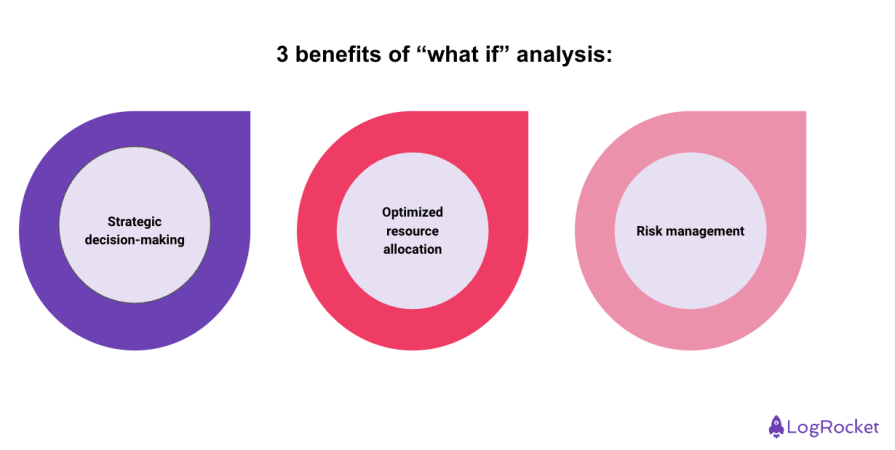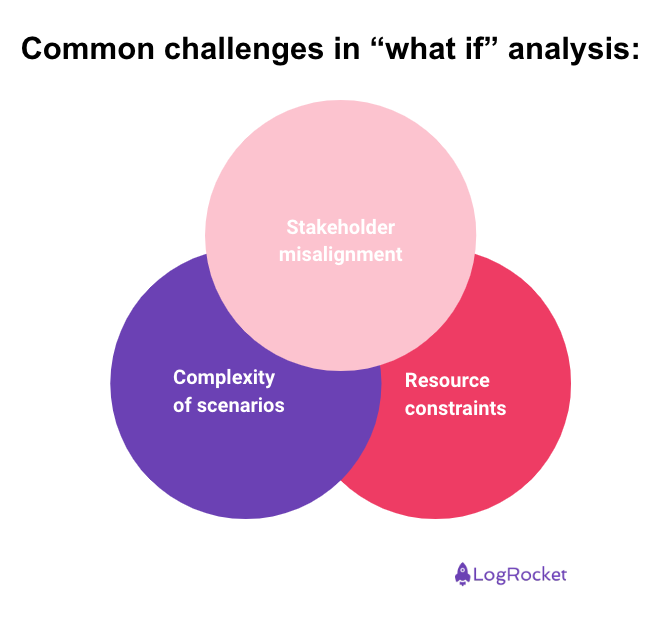In 2021, my team at Zalando worked for its content department called zStudios (Zalando Studios). zStudios was responsible for content that consisted of images, videos, and text, and included a team of approximately 400 people ranging from photographers, videographers, copywriters, and retouchers. We were in charge of building products for all of these users so they could produce content fast and effectively while keeping costs low.

In Q2 of 2021, we faced an interesting problem — zStudios wanted to move to a new building and because of this we had to make changes to our products. But the problem was, zStudios didn’t know when exactly the move would happen. This was mainly because the move was dependent on how fast the agreement was signed between the new landlord and zStudios.
At this point you might ask yourself, how can you plan something without knowing when to take your changes live? Enter the “what if” framework, a decision-making tool that requires you to consider the potential for success and risks of multiple hypothetical scenarios. By doing so, you give yourself an opportunity to make a more informed decision.
After we walked through the results of “what if” analysis, zStudies went ahead with the move at the end of Q1, 2022, and since we had the “what if” analysis, we took care of all the risks associated with this move.
To help you with your own application, this article explains “what if analysis” in depth, including a step-by-step guide, tools, and common challenges.
What is “what if” analysis?
“What if” analysis helps product and tech teams create a plan that accounts for various hypothetical situations. This empowers stakeholders with an idea of how each could play out and allows them to select a more-informed solution that reduces risk.
3 benefits of “what if” analysis
“What if” analysis has three main benefits:

Strategic decision making
“What if” helps the higher management, the product teams, and the stakeholders by evaluating the impact of different decisions and the changes associated with them. In our case (the one I mentioned at the start of the article), it helped the head of zStudios to understand the potential impact if it went live in Q4, 2021 versus Q1, 2022. It also helped my team understand what they had to do depending on the two scenarios and their potential outcomes.
Optimized resource allocation
As a product manager, you know the importance of resource optimization. Especially in situations when there could be multiple outcomes, it’s even more important to optimize the resources. “What if” analysis helps to prepare for various outcomes so that you have better budget and resource optimization.
Risk management
In the example of zStudios, the “what if” analysis provided clear information about the risks involved if zStudios moved to a new building in Q4, 2021 versus Q1, 2022. This in turn helped not only our teams but also the stakeholders, specifically, the higher management of zStudios to understand the impact of this short-term and long-term. It also helped to reduce the chances of unexpected setbacks and drove product stability.
A step-by-step guide to “what if”
Conducting a “what if” analysis requires a systematic and planned approach. To help you with this, you can use the following steps:
1. Define the goal and the scope
Objective: You need to understand why you need the “what if” analysis and specific situations/questions you want to answer. This serves as the north star of the analysis
Actions:
- Define the goal/problem you are trying to solve
- Define the scope of the problem
- Define the timeline
2. Gather data and insights
Objective: Collect relevant data and come up with actionable insights
Actions:
- Customer research
- Talk to stakeholders
- Analyze historical data
- Perform competition analysis
3. Articulate all possible scenarios
Objective: Consider all the possible scenarios and list them down. Make sure to talk to the stakeholders/customers to identify all the important ones
Actions:
- Brainstorm possible scenarios
- Document them with a detailed description
4. Analyze impact
Objective: Briefly evaluate the impact and analyze the priority. The higher the impact, the higher the priority
Actions:
- Understand what would happen in terms of cost, resource utilization, revenue, customer satisfaction, etc. depending on the possible scenarios highlighted in step three
- Identify the potential risks involved with every scenario
5. Review, communicate, and refine
Objective: Review the analysis with stakeholders, engineering, design, and any other team that might be impacted by this plan. Share with them the findings and recommend possible solutions
Actions:
- Present the scenarios to key stakeholders and the response strategies
- Discuss the assumptions and the limitations
- Refine the document depending on the feedback
This table details the tools I find useful when running “what if” analysis:
| Tools | Usage |
| Google Workspace (Google Sheets, Google Docs, etc) |
|
| Business intelligence tools (Tableau, Power BI, etc.) |
|
| Project management (JIRA, Confluence) |
|
Common challenges in “what if” analysis
Like anything, “what if” analysis comes with a unique set of challenges. Try to keep an eye out for the following:

Stakeholder misalignment
Stakeholder misalignment comes up the most. You can mitigate this with a weekly email to all stakeholders that updates them on changes. Back at Zalando we also had an in-house portal for all the employees. Because of this, we could create a group of all the stakeholders and other interested parties and post updates about the project including the “what if” analysis.
Complexity of scenarios
Tackle complexity by keeping the use cases as simple as possible. Do this by breaking down the complex scenarios into smaller components that are executable. Also, having an interactive approach and refining the scenarios helps immensely.
Resource constraints
Often with “what if” analysis, it can be challenging to know where to allocate resources. You need to prioritize well. Try to use various prioritization models such as the RICE framework or MoSCoW.
Key takeaways
In my experience, “what if” analysis substantially reduces risks and with the addition of generative AI and related tools, the predictions will become even easier. As I shared in my example, “what if” works really well if you find yourself faced with uncertainty or indecision. It helps to prepare you for all outcomes and anticipate problems that might arise.
Have you faced a situation where you had to do a “what if” analysis? What tools and decision-making frameworks did you use? Please feel free to write in the comments.
Featured image source: IconScout